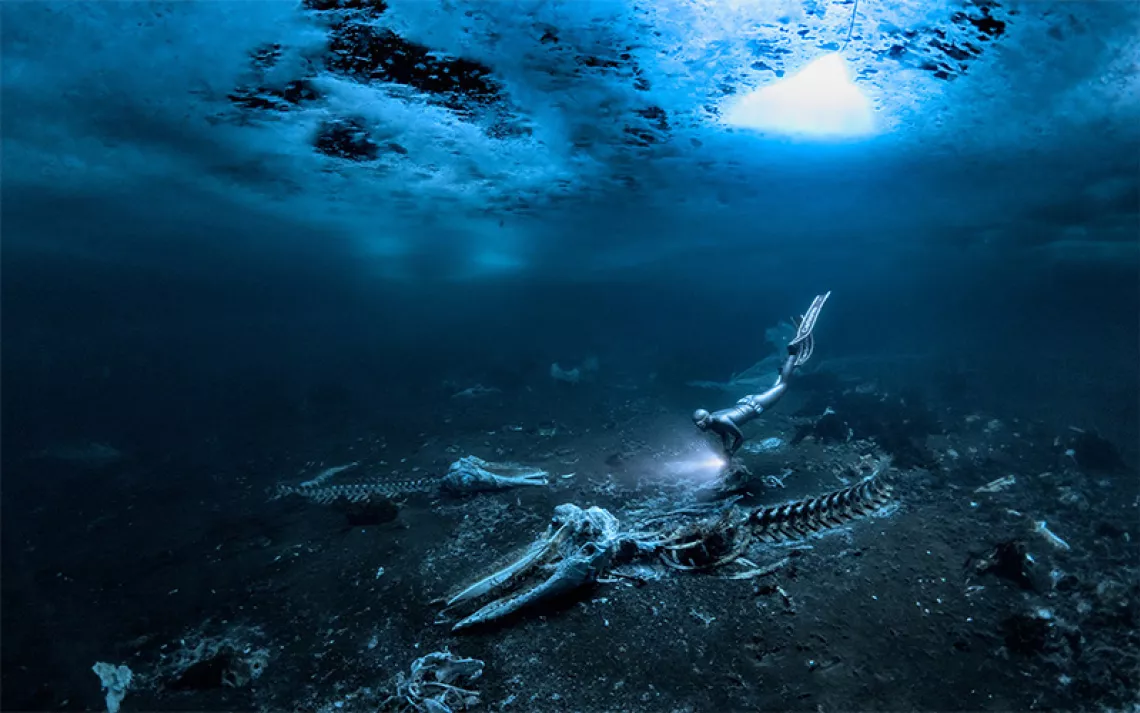What Earthrise Can Tell Us About Earth Day
Earth Day should be a time for thinking about time

Photo by mbolina/iStock
Editor's note: In 2020, on the 50th anniversary of the first Earth Day, we asked bestselling author Jenny Odell to share some thoughts about how to revitalize the unofficial environmental holiday. Her thoughts are just as wise today as they were three years ago, and so we're republishing her essay to mark Earth Day 2023.
Earthrise, the famous photo of Earth as seen from the moon, was made back in 1968, about 16 months before the first Earth Day. The photograph is so familiar that we take it for granted today, but at the time it was published, it was a lesson in perspective and momentary alienation, an opportunity to look back at our earthly home from a position outside it.
As an artist, I spent many years working with satellite imagery—collecting, cutting out, and arranging banal human structures like swimming pools, parking lots, and landfills. Spending those hours scrolling across the globe, I encountered a strange irony: Although the satellite view was not a human one, it was from this perspective that our built environment looked the most human, in all its fragile specificity.
This shift in perspective can happen in time as well as space. In the spring, when warblers and tanagers migrate through my neighborhood in Oakland, California, I might be fully enmeshed in thinking about all the things I need to do today, tomorrow, and the day after that until the unexpected arrival of a bird nullifies my personal timescale. With just a flash of red and yellow in a tree, I am invited into a timescape of temperatures, lengthening days, migrations, and breeding seasons. I feel the timeline of the human-caused decline in birds, a heartbreak mitigated only by gratitude for those that remain.
Just as a satellite view shocks us with the strange beauty of our seemingly familiar home, Earth Day has the potential to give us a new temporal perspective. There is no natural basis for a week or a decade, and the endless extractive growth that corporations project has no analogue in nature. Earth's clock is richer than the Western manmade clock, an overlapping set of rhythms in which many scales coexist: not only days and seasons but also tides, flowering events, ecological successions, and geologic accumulations.
Last October, at an environmental conference, I heard Casey Camp-Horinek, an elder and tribal councilwoman of the Ponca Tribe of Oklahoma, recount the creation story her mother had told her. "There was a being that lived in the red-star area," Camp-Horinek said. "I think the white folks call it the Pleiades. And among those seven sisters, on that red star, this being focused on this beautiful blue-green jewel that was floating through and around the heavens." As Camp-Horinek told the story of this being who adored Earth from afar and begged the creator to be allowed to live there and who eventually became humankind, I realized I was picturing Earth as seen in Earthrise. Ages before that photograph was made, this creation story had provided its own imaginary alienation, an opportunity to look back and be humbled by what was already here.
Camp-Horinek noted that when her mother had told the story, she had specifically begun with the phrase "a long time ahead ago." It occurred to me that the creation story might take place not only outside the familiar world but also outside how we now conventionally think about time.
I would like Earth Day to be like that: a pause for consideration, a day unlike other days, a time for thinking about time. Some things are visible only from a remove. Let this day be a porthole through which we look out on the vastness of ecological time, laughing in retrospect at our small-minded schedules and wondering how we might think and act in different ones. If we agreed to do that, I wouldn't be surprised if the effects of Earth Day cascaded into all our other days.
This article appeared in the March/April 2020 edition with the headline "Making Time for Time."
More Earth Day essays:
 The Magazine of The Sierra Club
The Magazine of The Sierra Club



